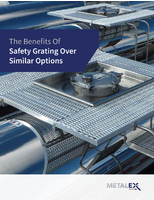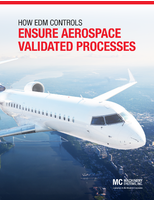Two-Stage Membrane Bioreactor treats industrial wastewater.
Share:
Press Release Summary:

Membrane bioreactor yields effluent that can be directly discharged to surface water bodies and low-grade re-use applications. It uses two filtration stages, biological and membrane, which are kept separate. Former utilizes Sanitaire® diffused aeration technology with Gold Series(TM) aeration diffusers, and latter uses submerged hollow-fiber ultrafiltration membranes with pore size of 0.2 micron. Level of mixed liquor suspended solids in system can be as high as 10,000-12,000 mg/L.
Original Press Release:
New ITT Dual-Stage Membrane Bioreactor Design Yields Higher Quality Effluent at Reduced Operating Costs
An innovative dual-stage membrane bioreactor (MBR) for advanced treatment of industrial wastewater delivers a higher quality effluent in less space and with lower operating costs than are normally associated with conventional activated sludge processing system. The new ITT Industries systems take advantage of synergies between two of its subsidiary companies: Sanitaire and Aquious - PCI Membrane Systems. Aquious is a new brand that envelopes ITT Industries' existing membrane filtration products and technology, including PCI Membrane Systems, Inc., Milford, OH. Sanitaire, Brown Deer, WI, is known for innovative wastewater treatment technologies used in municipal and industrial wastewater treatment facilities.
Targeted at industrial wastewater applications in food & beverage production, chemical and pharmaceutical manufacturing, pulp and paper processing, metal finishing and steel production, the ITT Dual-Stage MBR system is a complete and continuous process. It accepts wastewater with high loadings of BOD, suspended solids and other contaminants and yields an excellent quality effluent that can be suitable for direct discharge to surface water bodies (depending on local regulations) and "low grade" re-use applications such as vehicle washing. The water can be further treated with polishing processes (for instance, reverse osmosis) to yield potable water.
The new Dual-Stage MBR system offers several other benefits:
· Reliability - Simple-to-operate barrier technology, ensuring consistently high effluent quality
· Compactness - the intensive nature of the process minimizes space requirements
· Robustness - resistance to shock effluent loads
· Reduced sludge - the production of solid waste is reduced, limiting disposal costs
· Economy - advanced aeration and membrane technology minimize power demand.
In a traditional activated sludge process, wastewater is introduced into a biological treatment tank where organic contaminants are reduced and nutrients removed. The resultant biomass or sludge then flows to a clarifier or settling tank where solids separate out and effluent can be taken off and filtered prior to disinfection. If higher levels of effluent quality are required before disposal or re-use, an additional microfiltration or ultrafiltration step may be required.
Membrane bioreactors, on the other hand, use the physical barrier provided by an ultrafiltration membrane instead of a settling tank to separate solids from liquid. Thus the effluent is of significantly higher quality and little, if any, additional treatment is required prior to disposal or re-use.
In the new ITT Dual Stage MBR system, the biological treatment portion of the process is kept separate from the membrane filtration stage. Each stage of the process can then be operated at its optimum condition. Critical parameters such as aeration rate can be controlled discretely to minimize cleaning and power costs. In addition, this configuration provides flexibility that allows standard designs to be tailored to suit the specific requirements of different industrial wastewater types.
BIOLOGICAL STAGE
High-efficiency Sanitaire® diffused aeration technology is incorporated into this stage of the Aquious MBR system. The Gold Series(TM) aeration diffusers used have been preferred for years in conventional biological wastewater treatment systems.
Because membrane filtration is used instead of gravity settling for solids separation, the activated sludge process can be considerably more intense than is possible with a conventional treatment process. In fact, the level of mixed liquor suspended solids (MLSS) in the ITT Dual Stage MBR can be as high as 10,000-12,000 mg/liter, which is three to five times higher than that employed in conventional treatment. This higher concentration of biomass provides resilience to changes in influent quality and also greatly reduces the overall plant footprint required. Importantly, it also reduces the amount of waste sludge that is produced. For customers needing to reduce the concentration of nitrogen species and phosphorous, an anoxic zone can be incorporated to provide biological nutrient removal, which reduces the need for chemical precipitation.
FILTRATION STAGE
In the membrane filtration stage of the process, submerged hollow-fiber ultrafiltration membranes are employed to separate purified effluent from the biomass. The membranes operate in the ultrafiltration spectrum, with a pore size of 0.2 micron, so they provide effluent of a very high quality. The membranes are manufactured from porous polyethersulphone material with a braided reinforcement providing mechanical strength. These features of the unique, patented design significantly improve the membranes' ability to withstand the harsh operational environment of the membrane bioreactor and thus increase their lifespan. The hollow fiber membranes are open at one end and connected to a manifold through which a low vacuum is applied to draw the effluent through the filter. Lateral restraint supports provide further stability for the fiber bundles.
Patented air-scour nozzles within the fiber bundles produce air bubbles that keep the fibers in motion and drive solids from the surface. Periodically, some of the clean filtrate can be backflushed through the membranes to clean them.
The ITT Dual Stage MBR has been proven in multiple pilot scale performance trials conducted on both municipal and industrial waste streams. The results shown below (from a recent pilot plant trial on industrial wastewater) are typical of what is possible using the ITT system.
Parameter Influent MBR Treated water Removal
Average Max. Min. Average Max. Min. (%)
COD (mg/l) 2330 3360 1740 123 158 90 94.7
BOD5 (mg/l) 1420 1970 911 b.d.* (<4) 11 b.d.* (<4) 99.7
*b.d. = Below detectible levels.
The final effluent from this pilot plant also had turbidities consistently less than 0.1 NTU. These results illustrate the high quality of final effluent that is achievable by the Dual Stage MBR system.
The growth of membrane bioreactors in the global marketplace is a direct result of water scarcity and the increasing need to reduce levels of solids and nutrients in effluent to meet more stringent treatment requirements and to allow for water re-use. In general, any wastewater source that can be treated using activated sludge can be treated using the MBR process. Until recently, traditional activated sludge processes have been used for most applications because of their relatively low cost. However, MBR costs have been dropping and can be comparable or less than conventional treatment, especially when effluent quality requirements are more stringent.
The ITT Dual Stage MBR is designed to have a competitive capital cost and will show a 20 to 30% lower operating cost when compared to other MBRs currently marketed. Thus, in a typical 20-year life cycle analysis, the per-1000-gal cost of the ITT system will be at least 30% lower than other systems.
Aquious -PCI Membrane Systems, a unit of ITT Advanced Water Treatment, is a world leader in the application of membrane filtration systems. The company specializes in filtration systems based on tubular membranes for liquids containing suspended, colloidal or viscous materials. Aquious also supplies spiral-wound or hollow fiber membranes for clean feed streams, and ceramic membranes for applications requiring high chemical compatibility and thermal resistance. With its own membrane manufacturing facility and in-house research and development group, Aquious is able to engineer filtration materials and systems that exactly match the customer's application requirements. Installation, commissioning, training and technical support services are also available.




